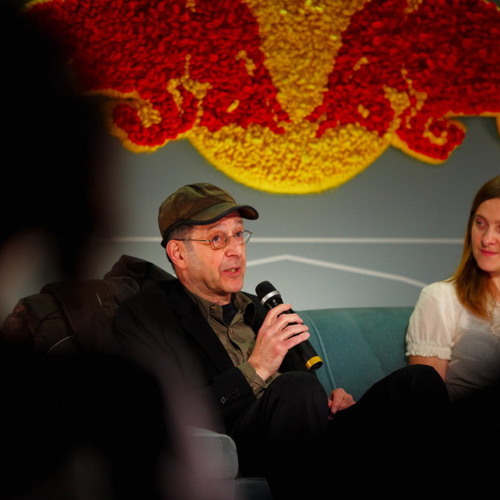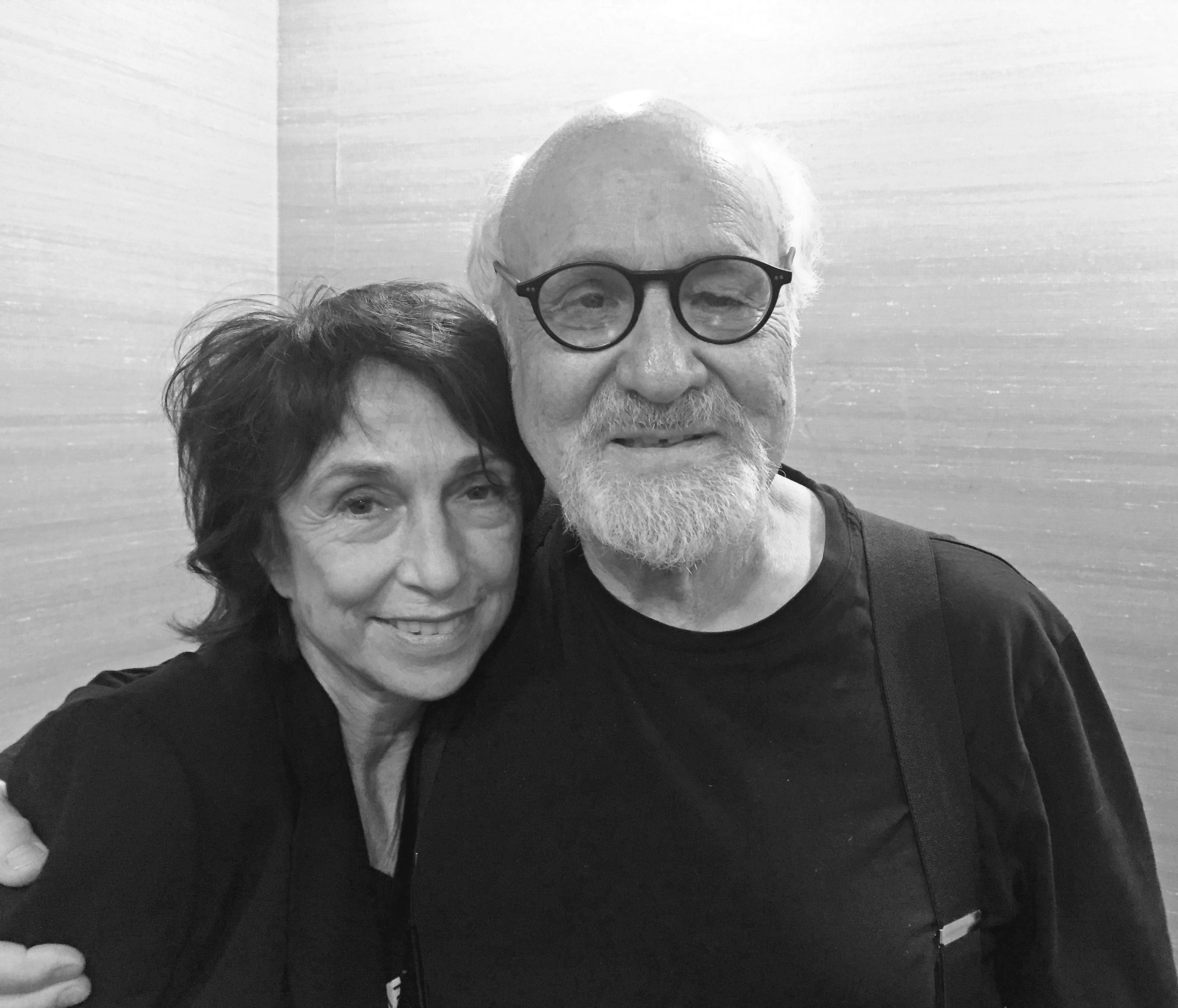The Diverse Explorations and Inspirations of Joan La Barbara
The composer discusses her formative musical experiences with Hanna Bächer

A vocal virtuoso and sound artist whose presence looms large in the world of experimental music, Joan La Barbara began exploring – and expanding – the possibilities of the human voice in the 1970s. Though she was classically trained at Syracuse University and Juilliard, it was her experiments with vocals as raw sound that made La Barbara a visionary. Her work eventually gave rise to a whole new vocabulary – trills, whispers, cries, sighs, inhaled tones, ululation and glottal clicks are just a few of her signature sounds.
In the mid-’70s, La Barbara began creating more structured compositional works, often using both vocal and electronic elements, and she’s collaborated with a stunning array of composers and artists including Philip Glass, Steve Reich, Morton Feldman, Matthew Barney, Christian Marclay and her husband Morton Subotnick. La Barbara devoted much of her time to educating other vocalists, as well – over the years, she’s taught at the California Institute of the Arts and Hochschule der Künste in Berlin, amongst other institutions, and is currently on the Music Composition Faculty of New York University.
In this interview with Hanna Bächer for RBMA Radio, La Barbara discusses performing for new audiences, the sexualization of female vocals and her new composition for the Young People’s Chorus of New York City.
Reactions
When I first began doing my solo concerts, I would sometimes get an audience that was unaccustomed to unusual sounds coming from a singer. When I would go in and meet the presenter, sometimes they’d say, “Well, where’s your pianist? Where’s your accompanist?” And I would say, “No, it’s just me.” Some of the sounds that I make are natural sounds. I think that part of the problem with the early audiences was since they weren’t accustomed to these kinds of sounds being used in the context of music, and related them more to other activities, I would sometimes get giggles in the audience. You just keep doing what you’re doing. You keep focusing on the material, and eventually the little titters stop and you’re able to draw them in to your own concentration. I think that’s the most important thing.
In my early years, I worked a lot with John Cage, and he, of course, almost to the very end of his life, had great difficulty with audiences, and sometimes with musicians. He said “No matter what, just keep going.” Keep doing it. I’ve sort of taken that as my mantra.
“The Rape of El Morro”
In the early years, because the sounds were so unusual for a vocalist to be making, there was a certain association with sexual context. At that time there was a singer called Donna Summer who was doing club music and layering in sexually-loaded kinds of sounds. I didn’t think of my sounds that way. I thought of really exploring the vocal instrument for all of the wonderful sounds that it could make.
I need to be somewhere where I can be respected for doing this kind of vocal study and have it be treated with some kind of respect.
I think originally the name of the tune was “Spanish Blood.” They had the instrumental tracks laid down, so all they needed was this vocal to layer over the top. I recorded my improvised vocal over the top of this track, and then I went off on tour with Steve Reich and came back and the album was out and pressed. They had changed the name of the composition to “The Rape of El Morro,” and it actually became the title of the LP. I was furious, because I just felt that it absolutely stated that was what this sound meant. To me, it wasn’t. It was my musical reaction to the musical material that I was asked to layer on top of. Also, the critic who wrote the liner notes, Leonard Feather, made a big deal out of this, about how obvious it was that this was just some sort of sexual act.
That might have been a turning point in my musical career, because I really ran away from commercial music at that point. I had been working with my feet in several territories, commercial music being one, and what we called “New Music” then. I was working with Steve Reich and a little bit later on, with Philip Glass and John Cage and many, many others. At this point I thought, “Well, if they’re just going to identify what I find as musical explorations with the voice as some sort of sexual activity, this isn’t the territory I need to be in. I need to be somewhere where I can be respected for doing this kind of vocal study and vocal work on improvisation, and have it be treated with some kind of respect.”
Inspirations
I find inspiration in a number of sources. I find inspiration from the music of other cultures. When I’m particularly intrigued by a sound, I’ll try to imitate it. I don’t try to make the music of other cultures, because obviously you can’t do that, but I can certainly be influenced and use certain aspects of what is intriguing to me. The use of birds, animals. I’ve imitated certain animals in some of my pieces.
There’s a work of mine called “Urban Tropics.” Now we think of Miami as sort of a quasi-Latin culture, but at the time that I was doing the piece there were a lot of places that you could go, like the monkey jungle and the parrot jungle, tourist places. I went with my headphones and my microphones and I went around recording these various sounds. At one point, I heard an extraordinary sound, and I was following it through this maze of footpaths and came upon a Sumatran ape, who was making this extraordinary sound. I included that sound in that work, along with a number of bird sounds and a fabulous crocodile. I waited for a long time by the crocodile’s pit, and finally it opened its great jaws and made this incredible sound.
I’ve also been inspired by electronic sounds and make use of electronics. I imitate some sounds of electronics, and I also make use of electronics to modify my voice. In one of my early works, which was called “Vocal Extensions,” I used external boxes that could be purchased at a commercial music store and just fed the microphone through those. I actually used these boxes almost as if it was another player, and I was reacting to the sounds that were created when I sent my voice through these modifying devices. I would try to just turn the dials and surprise myself.
I studied as a classical singer. I was studying opera, as many classical singers do, but I also heard a lot of instrumentalists who were experimenting with their instruments, and I was very intrigued with that. I thought, “Wow, the voice should be able to do this.” I started listening to recordings of Cathy Berberian working with Luciano Berio. You had Berio’s composerly attitude, and then you had Berberian’s expertise as a singer, but also her courage to use natural sounds: laughing, gasping, coughing, baby talk. There’s that wonderful piece, the Sequenza III, that Berio wrote for the voice. I actually coached that with Berio at a certain point. Of course I had listened to Cathy Berberian’s recording and imitated it, and he said, “Why are you doing that? You can do so much more. Make it yours.” So I opened it up and went much further.
I also listened to Ella Fitzgerald, I listened to Nina Simone. I had a lot of influences. The names that come to mind are from the jazz world. Milton Nascimento and Brazilian singers, of course, who were working a lot with percussionists who did a lot of experimentation, so the singers working with them have a tendency to be freer, in a way. I was influenced by conceptual artists. People like Vito Acconci come to mind, Bruce Nauman, Dennis Oppenheim. As far as teachers, though... I had no teachers in this territory. I was really exploring on my own.
A Murmuration for Chibok
Right now I’m in the process of working on a choral piece for the Young People’s Chorus of New York. When I spoke to Francisco Núñez about this, he said, “We don’t want a normal, ordinary piece, we want your special stuff.” When you write a piece you look for something to give you an inspiration, some topic, some idea, a painting, a picture, a feeling, whatever. I was very, very affected by the abduction of the schoolgirls in Chibok, Nigeria.
I was incensed on so many levels, first of all as a human being. Secondly, I was terribly disturbed that the reason these particular girls were taken was they were in school, they were studying. Boko Haram were punishing these girls by abducting them. The whole thing was horribly offensive. Further, I was offended that the political leader at the time, Goodluck Jonathan, did nothing to try to find these girls. It was as if they were dismissed because they were girls. “Oh well. That’s it. They’re gone.”
The Young People’s Chorus of New York have two choirs. They have a male/female choir and they have a treble choir, which is all female voices, so I decided to work with the female voices, and to do something in honor of the girls of Chibok. It’s a piece honoring these young women, honoring the beginnings of their lives, that they were about to take off, and honoring that they were studying in school, trying to better their minds.
Don’t ever think that singing is an easy profession. It’s smart. It takes a lot of work.
I went to a woman, a writer that I’ve been working with, the marvelous Vietnamese-American novelist Monique Truong. I talked to her about it, where I got to work on an opera, and I said, “Let’s do this choral work and sort of begin this way.” I made some drawings and I brought the drawings to my first rehearsal with the choir. Actually, the first rehearsal I had with the choir I did a vocal workshop, so I taught them a lot of my techniques, just to see what they were good at, what didn’t sound so great. When I came back, I came back with these drawings and ideas that I wanted them to explore. I showed the drawings first to Francisco and got a couple of raised eyebrows, and he said, “Wow, this is great,” but he said, “You’re going to have to work with them.”
The beginning of the piece is an ululation. It’s a fluttery sound, it’s early in the morning. When I had all of these girls making this sound it was wonderfully cacophonous. It sounded like a schoolyard, with these lovely young voices just chattering and in happiness. Then there is a kind of very raw wood block. What I used in rehearsal was a clave, but it’s almost too musical. I want just a very harsh kind of sudden, sharp percussive sound. Not a gunshot, but something from the woods. Suddenly the sound stops, and then there are little whispers of sounds. What I imagined there was the girls trying to hide somewhere and whispering, trying not to be heard.
Then there’s a very pure tone. I wanted unison, but then very gradually moving away from that unison, so you get these microtonal beats in the sound. The idea with that was this kind of unity, and then the very, very small conflict. Eventually it gets to rising tones. I drew a drawing of a tree branch that was actually hanging in my yard. I drew this branch and then laid it out horizontally, so that the main stub of the branch is this line that fluctuates a little bit naturally, and then these little branches came above and below, away from it. What I wanted was to have this central sound and then these small, sighing tones rising gently and falling away gently.
It all ends with a kind of cascading waterfall of voices, a sort of cleansing. The idea, as I said, is to honor these girls. The name of the piece is A Murmuration for Chibok. A murmuration comes from the flight of starlings. When they’re in flight, it’s almost like a fabric or carpet in the sky. They turn as one and make this incredible dance in the sky. It’s extraordinary. We imagine these girls in flight, we imagine them free, we imagine them independent, being able to communicate with one another – possibly only in thought, which is also something that these starlings seem to do.
A Voice’s Evolution
My voice has changed quite a bit over time, so the pitch range that I use for a piece like “Circular Song” is different. But what I find as I start the piece is that I start it in my current voice, which is lower than my younger voice. By the time I get into the piece, my voice has gone back somewhat to the clarity and simplicity of my voice from many years ago, which is not anything that I do with intention. I think it’s something that is embodied in the piece itself. Once I get into the piece, the piece, in a way, directs me and takes over my body. It’s a combination of the work helping my voice do this, and then my intellect directing the body to do what it has to do. Complicated. Singing is not easy, as Maria Callas said. Don’t ever think that singing is an easy profession. It’s smart. It takes a lot of work.
When you study as a singer, you do a lot of physical work not only with what we think of as the vocal apparatus, which is the vocal folds, but also in exercising your body, learning how to breathe, learning how to support your voice with your breath. Opera singers, good opera singers, are really athletes. They really have to keep that body in top condition. It’s a very foolish singer who would start singing without warming up.
Morton Feldman
I’ve done a lot of early Feldman pieces. I must say, I wish I had known about them earlier, because he really thought about using the voice as an instrument within the instrumental context, like on “For Franz Kline” or “I Met Heine on the Rue Fürstenberg.” The voice is just another instrument. It’s not out front. It’s not the vocalist delivering a message. It’s the voice used as an instrument within this incredible sonic fabric or texture.
Feldman thought a great deal about visual art. He had very close relationships with visual artists. He actually was the head of the New York Studio School for a period of time. When he thought about his pieces, he was thinking the way a visual artist thinks. He would talk about the picture plane, he would talk about things rising out of the picture plane. He has this wonderful piece, “The Viola in My Life,” which is one of my favorite pieces of his, for a viola solo and orchestra. He talks about when he wrote that piece as it being an embodiment of this individual line rising out of the picture plane.
When I was living in Berlin a number of years ago, I wrote to him. I would do this from time to time. If I was hitting a kind of dry spell as a composer, I would reach out to other composers and I would say, “Write me a piece.” I wrote to Morty and I said, “I’d love you to write me a piece for voice and orchestra, something like ‘The Viola in My Life.’” A number of months later, he sent me “Three Voices” with no instructions, no metronome marking, no vowel indicated on which to do vocal leaves. He sent this with a letter. He said, “You can do it with a fast slowness or a slow fastness.” And he said, “You could think of it sort of like a cocktail dress with a long train.” [laughs]

